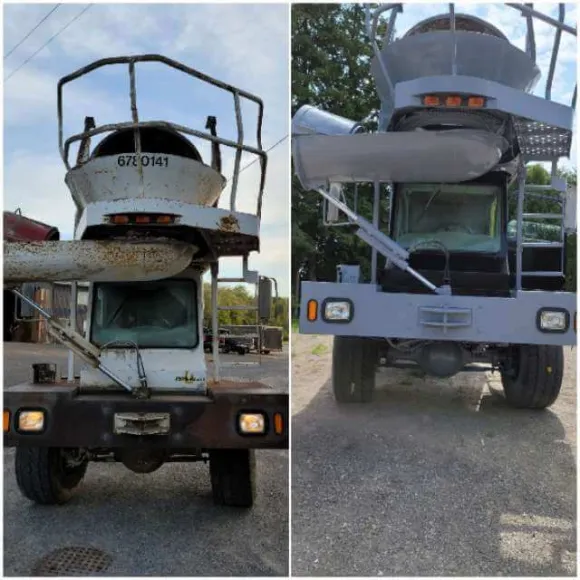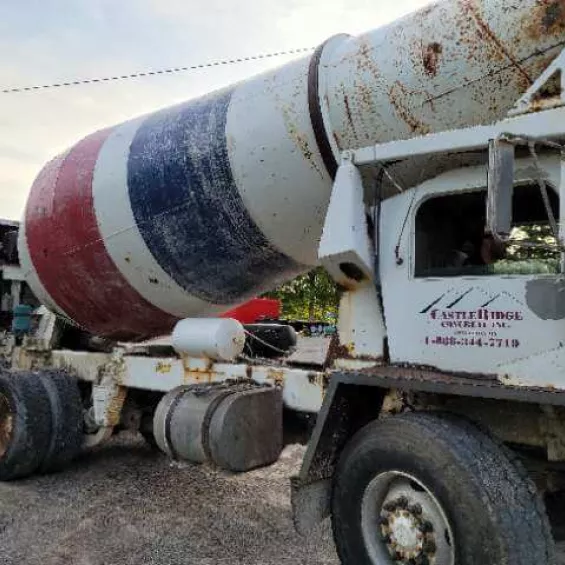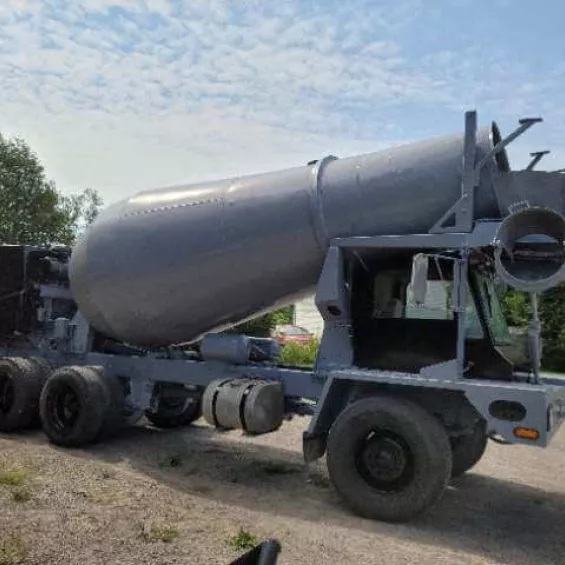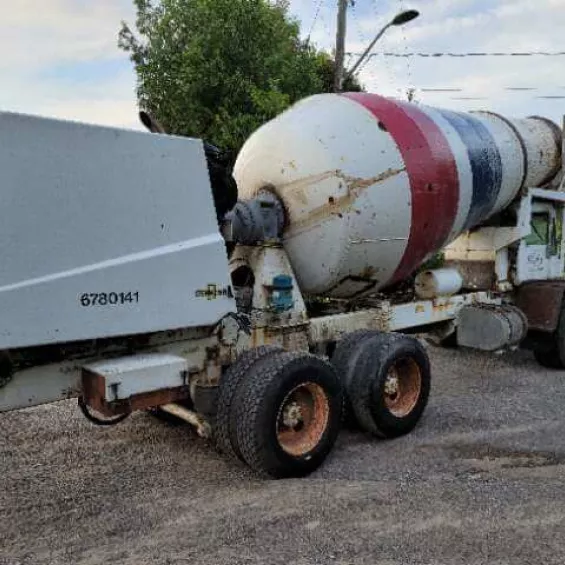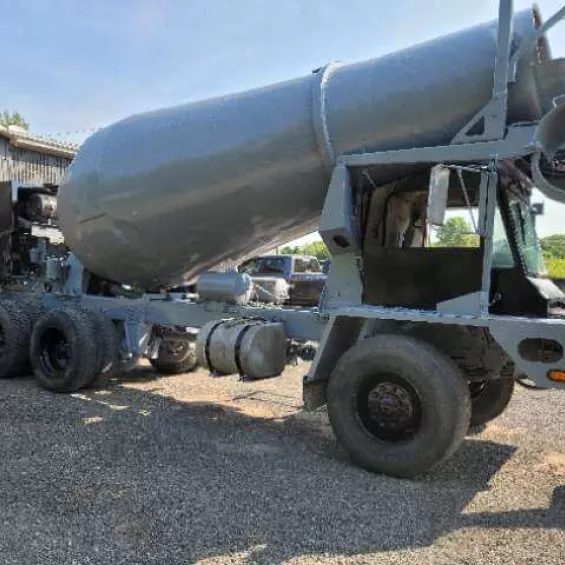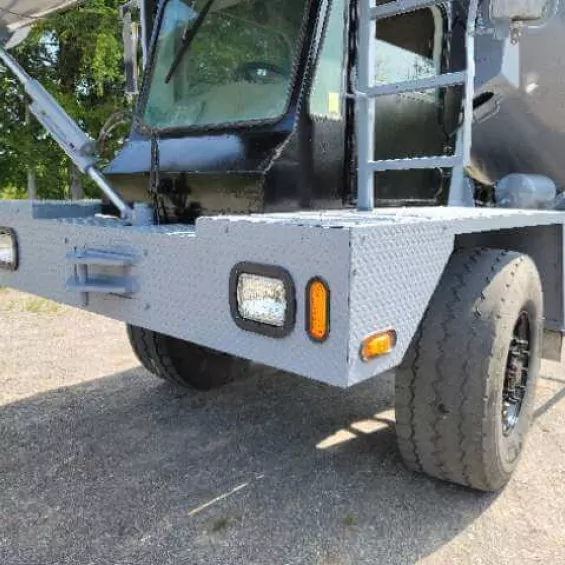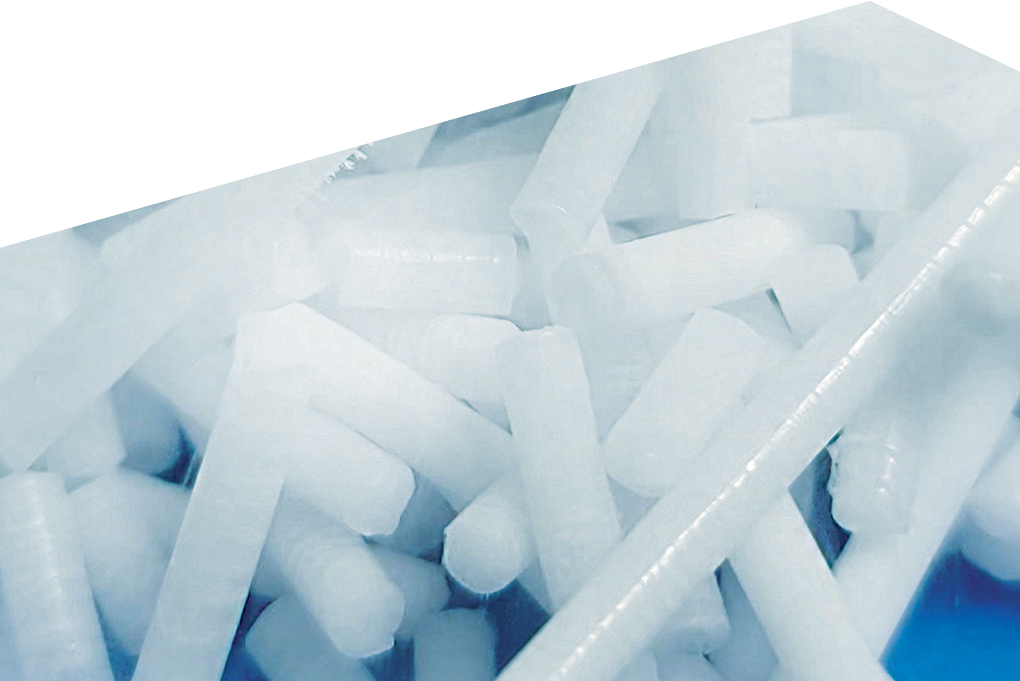After several years on the road, this cement truck was in serious need of rust removal and a new coat of paint. For this job, we had to get down to bare metal, then we could repaint the truck.
Our team started with a complete sandblasting of the entire exterior to remove the rust damage as well as the old paint.
Thoroughly removing all of the rust before adding a primer ensures a longer lasting paint job, and a better lifespan for the cement truck overall.
After the body and rims had been cleaned and profiled by our sandblasting equipment, the truck was all ready to be painted.
On a project like this we use an epoxy primer. When used as a base coat, epoxy primer serves as a durable, non-porous, and corrosion resistant sealant that protects the surface underneath.
What is Epoxy Primer?
Epoxy primer is safe to use on metals, fiberglass, and plastics, and works exceptionally well on bare steel.
Choosing an epoxy base coat over a urethane base coat helps waterproof the metals and offers chemical resistance, preventing future oxidation and providing longer lasting protection against possible corrosion.
After the epoxy base coat had time to dry, our team was ready to add the final layers of paint.
For the top coat of colour we use a polyurethane coating directly on top of the dried epoxy.
Why Did We Choose Polyurethane Coating?
The polyurethane top coat of paint provides a water-resistant barrier that has the ability to hold up against all kinds of harsh seasonal weather and works together with the epoxy base coat to create a strong rust-resistant finish.
We opted for a sleek polyurethane black finish on the cab, the rims, and the engine shroud, and polyurethane grey for the rest.
After the paint finished drying, this cement truck was ready to get back on the road!

